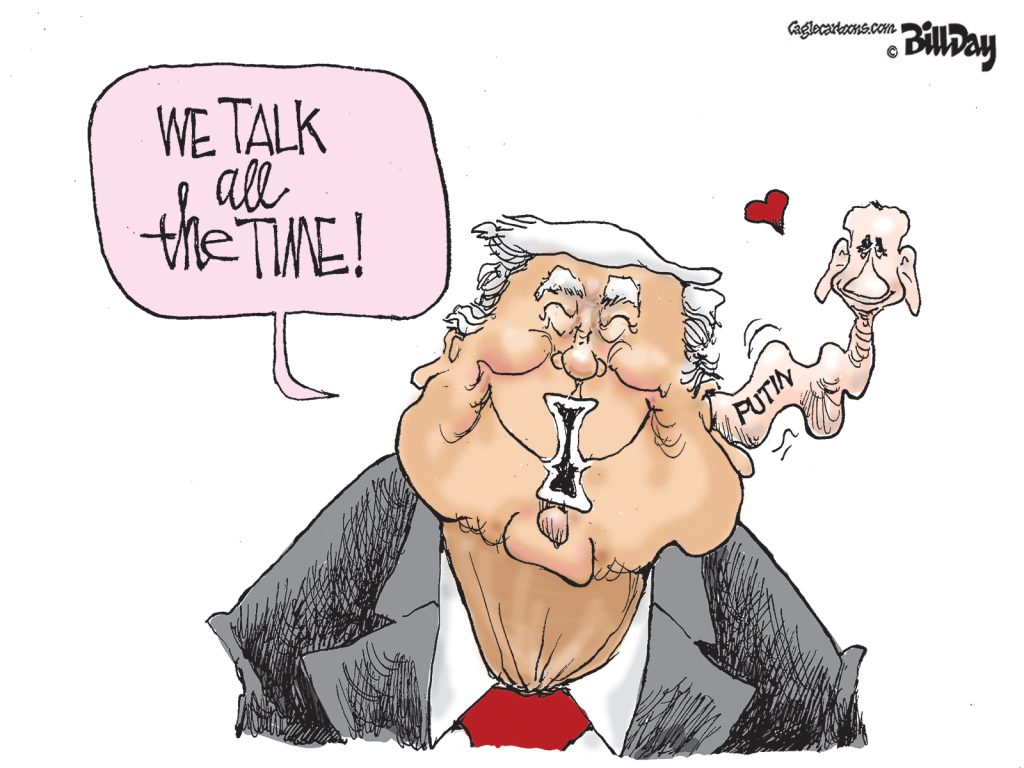
The next time you hear anyone from the suburbs complaining about how much is spent on projects in downtown, Midtown, or other neighborhoods in Memphis, remind them that I-269’s 60-miile loop around Memphis will have a pricetag of well over $1.2 billion.
The latest leg of this boondoggle opens tomorrow with the 4.5 mile segment of I-269 between Tennessee Highway 385 in Collierville and Mississippi Highway 302 in Marshall County. Project cost for this leg: $53.8 million and $42.5 million is the Tennessee portion.
The grand opening ceremonies will undoubtedly be marked by rhetoric about how the highway is economic development, and somewhere along the way, someone will even hail it as an investment in smart growth, open space protection, and knowledge economy jobs (amazingly, they’ve done this before).
But make no mistake about it, the highway is a gift to special interests and big money political contributors poised to make millions off of the green fields opened up by these unnecessary lanes of traffic. And it’s being done while MATA fights for its life and faces cuts in federal funding, while US-78 south of I-240 continues to crumble and drive jobs away from Memphis, and while I-69 is put on a back burner although it was the original project everyone supported. It’s little wonder that the national Sierra Club has rightfully identified I-269 as one of the 50 worst transportation projects in the U.S.
Insult To Injury
Dennis Lynch of our local Sierra Club, has summed it up well: “I-269 is an example of infrastructure that we simply cannot afford, it should not be part of a 21st century transportation system for our community. Although most of I-269 in Tennessee is already built, we need to learn from the experience and make sure that future transportation projects in the area increase the variety of transportation options available, and make our employment centers accessible to all workers.”
The fact that the future of Memphis can be put in peril for more unsustainable sprawl and for a highway with no reason to exist is the saddest commentary of all on the lack of concern for the future of the core city that drives our economy and the accompanying job sprawl that will place employment beyond the reach of more Memphians.
Mayor-elect Jim Strickland got it precisely right when he said a few years ago that “the completion of I-269 will cause great challenges to Memphis and Shelby County.” “It will make it easier to work in the city or county but live outside the county, thereby negatively impacting our tax base.”
To add insult to injury, Tennessee transportation officials have said that there are no plans to build I-69, which was the highway needed in the first place and for which I-269 was to be merely serve as an alternative route. Governor Haslam’s TDOT officials said that there are money pressures that caused them to set aside plans I-69 although the decision came only after hundreds of millions had been spent for I-269.
Different Rules For Different People
At this point, even some politicians in the municipalities, particularly Collierville and Bartlett, should understand the largely negative impact that I-269 will have on their cities. The blind pursuit of this interstate without a fuller context for its impact on the entire region, not to mention Memphis, speaks to the lack of appreciation for planning a future based on quality rather than merely making major decisions in a vacuum to satisfy those with influence in the halls of government.
It is a classic case study of how a purely political transaction for well-connected supporters can end up wounding the region’s economic heart, and in addition, at the moment when Mississippi officials’ economic development game plan is anchored in stealing companies from Memphis and Shelby County, I-269 gives them another bragging point for their pitch.
It’s also a case study of the way that political insiders and development interests are able to win even when they appear to have lost. Once a decision seems to be decided, the public moves on, but developers move in and game the system through lobbyists and operatives who back door the system, looking for soft spots in the decision-making process and painting elected officials into corners, where exhausted and politically hemmed in, they give in.
Political Gamesmanship
To their credit, Memphis Mayor Willie W. Herenton and Shelby County Mayor Jim Rout were united in their opposition to I-269, preferring instead a single I-69 north-south route through Memphis and they had even recruited the Tennessee governor to their position. They thought they had the upper hand, drawing a lesson from the Kentucky governor who said: “I can’t say where it (I-69) will go inside Tennessee, but I can damn well say where it will enter Tennessee.”
That northern entry point was a political debate almost as contentious as the one about where I-269 would enter Mississippi, but in the end, Kentucky interests won over Tennessee transportation officials because the Kentuckians had control over the highway’s entry point into Tennessee. Bolstered by that lesson, the local mayors believed the Tennessee Department of Transportation could set the entry point to Mississippi, and in this way, they thought they had the ultimate trump card in the decision-making.
However, driven by the clout of U.S. Senate Majority Leader Trent Lott, Mississippi politicos trumped their Tennessee counterparts when he added wording to a federal bill that essentially took the decision out of Tennessee’s hands while stepping up the schedule for construction and ensuring that it crossed politically influential landowners’ properties in North Mississippi.
Lott was supported by then U.S. House of Representatives Majority Leader Tom (The Hammer) Delay (R-Texas), who suggested that the I-69 Coalition lobbying for the interstate needed someone who would be uniquely skilled in presenting its case in the nation’s capital. That person just happened to be Mr. Delay’s brother, who was paid about $300,000 a year.
Nailing Memphis To The Wall
To DeLay’s hammer, Lott played the nail, and the federal bill put it in the coffin for Tennessee’s hopes of killing I-269 once and for all. In the end, Mayors Herenton and Rout finally relented on a proposal with a through Memphis I-69 route and a circumferential I-269 alignment. It was a compromise that added hundreds of millions of dollars in construction costs to the project, but in the end, Mississippi politics won and Lott dictated the alignment of the highway through Mississippi. And undoubtedly, his political contributions were better for it.
It’s a seminal fact of life about decision-making related to transportation investments. There is always the persistence of the force that comes from those driven by their own financial interests, such as developers and highway builders. That both groups can be so single-minded in their self-interest to the detriment of the overall health of Memphis is something best left for psychologists to study, but it is odd how often short-term financial and political interests can trump long-term sound public policy.
From the beginning, I-269 has been a bait and switch. It was about a convenient alternative for truckers bypassing Memphis on their way to Nashville, but then why have exits every mile and a half? It was about opening up the depressed regions of North Mississippi to new economic growth, but then why was an interstate needed for this? It was about smart transportation, but meanwhile, our region operates without a functioning public transit system? It’s about giving lip service suport for 30 years to the importance of improving Lamar Avenue where we are losing jobs because of the disinvestment in this area’s infrastructure while hundreds of millions are spent on I-269?
Paving Inequality Into Our DNA
There were actions, such as green preservation zones, limited access, and user fees, that could have been taken to mitigate the negative impact of I-269, but local officials failed to play hard ball with the Tennessee Department of Transportation and the Bredesen Administration and as a result, Memphis’ interests were given little weight in the decision-making.
But here’s the unmistakable result of I-269: income segregation. And we’re not talking about the income segregation of Memphis. We’re talking about the income segregation of the entire MSA. Of the largest metros (those with a million or more people), ours is #2 for America’s most income-segregated large metros, a fact that limits our economic success and potential for the future.
Most of all, it is baking inequality into the economic geography of our region. It limits life choices for children born into neighborhoods of concentrated poverty and limits opportunities for adults who have less mobility to reach jobs, job training, and public services. And in a region where the highest concentration of poverty is farthest from job centers, all of us pay a price.
Here’s why this matters so much. Memphis has no margin for error.
Slap Happy
To markedly improve our trajectory, we have to do an awful lots of things right. Decisions about highways and transportation here are not only not right; they are disastrously wrong.
How is it that there is such a clear, consensus opinion that we have paid a devastating price for highway decisions that fueled sprawl and hollowed out Memphis, but despite that, in an act of cognitive dissonance, we unbelievably continue on with the same misguided approach toward road-building?
It is this assault on reason that continues to most dramatically play out in the billion dollars being spent for I-269.
Tomorrow’s grand opening will undoubtedly be a time of enthusiastic backslapping about the opening of I-269’s latest leg, but it’s hard to escape the fact that for Memphis, it’s nothing short of a slap in the face.
***
Join us at the Smart City Memphis Facebook page for daily articles, reports, and commentaries that are relevant to Memphis.





Hard to see how any type of big economic development like this in Memphis and surrounding area can be a “slap in the face” for Memphis. This city and its region are so very down and economically depressed that any development should be welcomed simply for the spillover effect.
Jobs sprawl, reduced densities, unsustainable infrastructure, and failure to invest in the economic heart of the region are slaps against logic and sound policy, not just against Memphis.
It’s long past time for everyone in Memphis to get off the “pity porch” and stop the blaming and bemoaning that seems to be everywhere
While the building of 269 is unfortunate, and I doubt it will ever be converted into a tollway, I hope the embrace of better urban design will make it less likely for speculative office buildings to be placed around the 385/269 corridor. I could very well be wrong, but the idea of working in an isolated office building, surrounded by a parade of newly built fast food joints and cheap chain restaurants is to me highly dystopian and uninspiring. That’s not the type of design that gets entrepreneurs to move into your city.
Anonymous: No one is on the pity porch. We’re on the porch for identifying mistakes, learning from them, and trying not to repeat them. I-269 is a grievous repetition of the sprawl that created so many of our core problems.
Chatul: Our MPO has said that it can’t legally be a toll highway, but there are toll interstates in other parts of the country. It deserves more considerations. We hear you about the dystopian environment – it’s why young adult workers have a strong preference for living within three miles of the CBID.
Hate sprawl….such a waste of resources
In early 1968 I was 23 and fresh out of graduate school in City Planning. I had been hired by the council of governments for the Memphis Metropolitan Area – Shelby, Desoto and Crittenden counties.
Six years earlier in 1962 a major national consultant, Harland Bartholomew and Associates (HBA) had begun preparing a major road plan for an area covering Shelby County and two miles into Desoto County. My job was to prepare a major road plan for the entirety of the three metro counties. HBA’s mandate and funding came from the 1962 Highway Act. My mandate came from the Demonstration Cities & Metropolitan Development Act of 1966. Both efforts were to be finished later in 1968.
The HBA planning was led by Bill Pollard, Managing Partner of the Memphis office, and his associates Ron Schmeid and Jim Yarbrough. I had access to these consultants and we discussed their recommendations on numerous occasions.
They had prepared a map showing existing and proposed major roads for the year 1990. Proposed roads were shown as heavy dashed lines on the map. One of these proposed roads was what is today called 385/I-269. Pollard/Schmeid/Yarbrough told me that this outer loop was not to be a development corridor but rather a scenic drive that connected to Shelby Forest.
I argued that this would not happen and the road would be viewed like the I-240 loop around Memphis and cause urban sprawl. I lost the argument.
Today we see the result, and even if I-69/269 did not exist, there would be the 385 road and the land development pressures to push urbanization outward at low densities in direct conflict with the best interests of Memphis.
You have said it all Tom. Memphis is but one vote on the MPO and in the years that shaped the final plans for I-69 the vote was most often aligned with the pro-I-269 advocates – suburban Mayors and Mississippi. Anti-sprawl proponents, smart growth advocates, local small businesses and the like never, ever stood a chance. Never was it proven that we needed a high seed interstate slashing through the City, cutting off neighborhoods and destroying the lifeblood of local businesses. The main reason given was to give truckers a faster route through the City. Now, does that make sense? Let truckers get to Mississippi quicker so they can buy gasoline cheaper in Mississippi?
Be that as it may, as Gene Pearson said, I-269/385 was never a good idea and it was always a wolf in sheep’s clothing much like all other transportation engineering driven projects that have dominated and shaped the planning of Memphis.
And yes there are many Federal interstates across the country that are toll roads particularly in the Northeast, Florida, Kansas, Ohio, Virginia, et al. Tolls were authorized in the Federal Highway Act of 1956.
I put my MUATS map right next to my Memphis 2000 Policy Plan (sic) map next to my downtown expressway drawing next to my Shelby Farms Eckbo Zoo Plan and drink to the successes of comprehensive planning in Memphis and Shelby county at least once a month, myself.
before driving to Destin via 385 to Hwy 72 to Interstate 22 to check on my retirement homes several times a year.
This suburb dweller didn’t ask for the gift, thanks.
Anon 3:59
Can you explain your comment. I’m not sure of your point, but it seems interesting and historic.
If Memphis wants more say so it what happens around here they’ll have to start becoming self-sufficient. The bottom line is who pays the bills runs the show. As long as the suburbs are forced to continue to keep Memphis afloat and pay their bills, we’ll get to do as we please.
Anonymous: Since Memphians paid 70% of the cost for suburban sprawl, it seems like it’s time for the suburbs to help the city that is the economic hub of the region. But how the suburbs are keeping Memphis “afloat” is a mystery to us. Last time we checked, they don’t pay city taxes and most of them commute into Memphis to get their paychecks but don’t pay for the upkeep in city services they use.
They do pay city taxes…to the city they live in. If Memphis wants more taxes make it a more desirable place to live for people that actually pay the lion’s share of the taxes. If the suburbanites didn’t commute into Memphis to work in the corporations in Memphis they would have to close their doors.